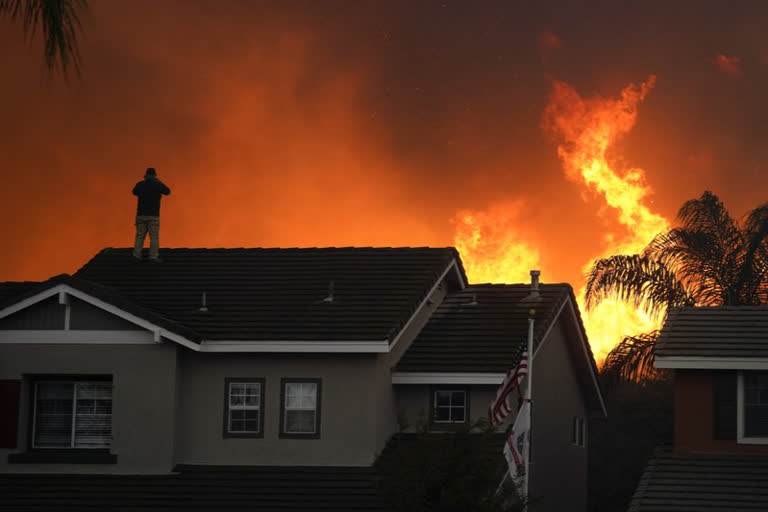New York:An overheating world obliterated weather records in 2020, creating an extreme year for hurricanes, wildfires, heatwaves, floods, droughts and ice melt, the United Nations’ weather agency reported Wednesday.
The report kicked off a day when the United Nations pushed for new climate action with two reports and a major speech by Secretary-General Antonio Guterres describing the woeful state of the planet.
The U.N. is ramping up its efforts for a Dec. 12 climate summit in France on the 5th anniversary of the 2015 Paris climate agreement.
The WMO report found that worsening global warming is being seen in all seven key climate indicators, but it said the problem is more than measurements and is increasing human suffering in an already bad year.
“In 2020, over 50 million people have been doubly hit: by climate-related disasters (floods, droughts and storms) and the COVID-19 pandemic,” the report said. ”Countries in Central America are suffering from the triple-impact of hurricanes Eta and Iota, COVID-19 and pre-existing humanitarian crises.”
Read:|Bushfire sweeps Australia's Fraser island
By the time it ends, 2020 will go down as one of three warmest years on record, despite a La Nina cooling of the central Pacific that often lowers temperatures globally, the WMO report said.
This year is set to be about 1.2 degrees Celsius (2.2 degrees Fahrenheit) warmer than the last half of the 1800s, which scientists use as a baseline for warming caused by heat-trapping gases from the burning of coal, oil and natural gas. Most trapped heat goes into the world’s seas, and ocean temperatures now are at record levels, the report said.
“There is at least a 1-in-5 chance of it temporarily exceeding 1.5 degrees Celsius by 2024,” WMO Secretary-General Petteri Taalas said in a statement.
The Paris climate accord set a goal of not exceeding 1.5 degrees (2.7 degrees Fahrenheit) of warming since pre-industrial times.
A new analysis by Climate Action Tracker scientists who monitor carbon pollution and pledges to cut them said public commitments to emission cuts if kept, would limit warming to about 2.6 degrees Celsius (4.7 degrees Fahrenheit) and possibly as low as 2.1 degrees Celsius. Those public commitments include President-elect Joe Biden’s promise that the U.S. will have zero net carbon emissions by 2050 and China’s goal to do the same by 2060.
